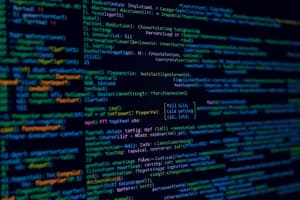Podcast
Questions and Answers
Quais estruturas de dados em Python são mutáveis?
Quais estruturas de dados em Python são mutáveis?
- Tuplas e dicionários
- Listas e conjuntos (correct)
- Conjuntos e listas
- Dicionários e tuplas
Quais são as estruturas de dados usadas para armazenar dados que não devem ser modificados?
Quais são as estruturas de dados usadas para armazenar dados que não devem ser modificados?
- Tuplas (correct)
- Listas
- Dicionários
- Conjuntos
Quais são as principais áreas em que Python é usado?
Quais são as principais áreas em que Python é usado?
- Só desenvolvimento web
- Ciência de dados e inteligência artificial
- Desenvolvimento web e computação científica
- Ciência de dados, inteligência artificial, desenvolvimento web e computação científica (correct)
O que são dicionários em Python?
O que são dicionários em Python?
Quais são as estruturas de dados em Python que armazenam coleções únicas de itens?
Quais são as estruturas de dados em Python que armazenam coleções únicas de itens?
Qual é o objetivo principal da programação orientada a objetos?
Qual é o objetivo principal da programação orientada a objetos?
Quais são os dois componentes principais de uma classe?
Quais são os dois componentes principais de uma classe?
Qual é a função do método read() de um objeto de arquivo?
Qual é a função do método read() de um objeto de arquivo?
Qual é o nome do módulo built-in do Python que é usado para tratar exceções?
Qual é o nome do módulo built-in do Python que é usado para tratar exceções?
Quais são os dois blocos principais utilizados para tratar exceções no Python?
Quais são os dois blocos principais utilizados para tratar exceções no Python?
Qual é o nome do erro que ocorre quando um arquivo não é encontrado?
Qual é o nome do erro que ocorre quando um arquivo não é encontrado?
Flashcards are hidden until you start studying
Study Notes
Python
Python is a versatile and widely used programming language that has gained popularity over the years. It was designed to be easily readable and to emphasize code readability. Python is used in various fields, including data science, artificial intelligence, web development, and scientific computing. In this article, we will explore the basics of Python, focusing on its data structures, object-oriented programming, file input/output, and exception handling.
Data Structures
Python offers several data structures, including lists, tuples, dictionaries, and sets. These data structures are used to store and manipulate data in different ways.
-
Lists: Lists are ordered collections of items. They are mutable, meaning their content can be changed. For example, you can add, remove, or change the elements of a list.
-
Tuples: Tuples are similar to lists, but they are immutable, which means their content cannot be changed. Tuples are often used to store data that should not be modified.
-
Dictionaries: Dictionaries store data in key-value pairs. The keys are unique identifiers, while the values can be any data type. Dictionaries are useful for retrieving data based on specific keys.
-
Sets: Sets store unique elements. They are unordered and mutable. Sets are often used to store a collection of items and perform operations like finding the intersection, union, or difference between two sets.
Object-Oriented Programming (OOP)
Object-oriented programming is a programming paradigm that uses objects to represent data and its behavior. Python supports OOP through its classes and objects.
-
Classes: Classes define the structure and behavior of objects. They consist of methods (functions that belong to the class) and attributes (data variables that belong to the class).
-
Objects: Objects are instances of classes. They have their own state (attributes) and behavior (methods). Objects can be created from classes and can be manipulated and used in programs.
For example, you can define a class called 'Person' with attributes like name, age, and height. You can then create an object of the 'Person' class and set its attributes.
File Input/Output
Python provides various functions and modules to handle file input and output operations.
-
Opening a file: The
open()function is used to open a file. It takes a file name as an argument and returns a file object. You can then read or write to the file using this file object. -
Reading from a file: To read from a file, you can use the
read()method of the file object. This method reads the entire contents of the file as a string. -
Writing to a file: To write to a file, you can use the
write()method of the file object. This method writes the given string to the file.
For example, you can open a file called 'myfile.txt' in read mode, read its contents, and print them to the console.
Exception Handling
Exceptions are errors that occur during the execution of a program. Python provides a built-in module called exception to handle exceptions.
-
Types of exceptions: Python has several built-in exceptions, such as
ValueError,TypeError,ZeroDivisionError,FileNotFoundError, andIOError. -
Exception handling: To handle exceptions, you can use a
tryblock to enclose the code that might raise an exception. If an exception occurs, the code within theexceptblock will be executed.
For example, you can try to open a file that does not exist, and if the file is not found, handle the FileNotFoundError exception by printing an error message.
In conclusion, Python is a powerful and versatile programming language with various features, including data structures, object-oriented programming, file input/output, and exception handling. Understanding these concepts is essential for mastering Python and using it effectively in various applications.
Studying That Suits You
Use AI to generate personalized quizzes and flashcards to suit your learning preferences.




